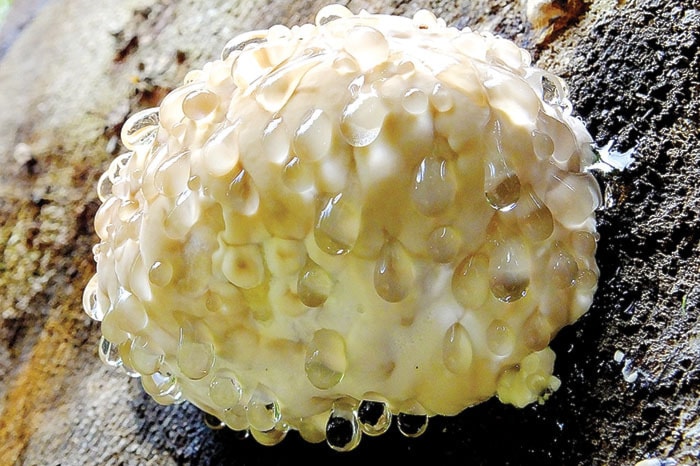Think it’s ‘all over’ until springtime? Think again. Mother Earth is at her finest when she tosses sparkling oddities into the winter woods.
Mushrooms with closely-packed pores, rather than gills, not only survive freezing temperatures, but are often at their best from October until March. Occasionally, one will observe a woody type of this fungus, called a polypore growing from a dying or decayed log or stump.
When that fungus excretes liquid, it creates the illusion of a mushroom weeping, a phenomenon particularly striking when sunlight streams through the droplets, causing the fungus to sparkle. Nature photographers capture images through the drops using close-up ‘macro’ settings.
The scientific term for this state is ‘guttation’, the exudation of liquid from the uninjured surface of a plant. ‘Dew’, which condenses from the atmosphere onto the plant surface, is not the same thing.
Humans breathe out carbon dioxide and water (as a gas) into the atmosphere; many fungi exude the same metabolic products, some invisibly, while others excrete excess liquid visibly as drops.
Some polypores ‘weep’ weakly acid water during growth spurts, when metabolism increases, although droplet formation may occur for many reasons. Fungal guttation remains a topic requiring further scientific investigation.
One of our most memorable fungal finds was discovering Bleeding Hydnellum during a hike in Strathcona Park. This aptly named species, during growth spurts, exudes blood-red droplets over its creamy flesh.
On that timely and gory note, I wish all readers a Happy Halloween. Contact Christine at: wildernesswest@shaw.ca.
